September 26, 2019
Photographing Red Grouse in the Scottish Highlands
After a summer spent in Europe, from the heat of Andalusia to the rainy mountains of Bergen, Norway, I’m actually really looking forward to getting to Scotland for autumn and a chance to photograph red grouse in the flowering heather.
It’s incredible to be here as the season changes, the leaves begin to turn, and the last of the migrant birds begin to leave in preparation for winter.
I’m back up in the Highlands of Scotland again, which is fun in a way, because this is really where things began to take off for me a year ago.
Like last year, it’s raining a lot again, but having come straight from Bergen, it hardly seems like anything at all.
Red Grouse Photography in the Scottish Highlands
For my first project here, I knew I wanted to take advantage of the shift in season, and to really highlight this, I wanted to try to capture the heather in full bloom. I decided to focus on red grouse as I know an area where there are decent populations.
So I took to the hills, to a long track and a grouse moor I know well near Tomatin, off the A9 in the Highlands.
To begin with, I drove slowly along the track with the windows open, scanning the moors and also listening out for the grouse calling.
To find out more about using a car as a hide, check out my blog post on photographing birds from my car in Cumbria here!
Where I first stopped to do some filming wasn’t ideal, as there was too much other grasses, rushes and sedges, in particular deer grass in the surrounding vegetation. While this is good for grouse, and also quite eye catching in its own way, with the oranges and browns, it wasn’t quite what I was looking for.
In addition, I was ideally looking for areas of the moor where the peat was raised, or the track was cut in, so that I could shoot at eye level.
I had about 7 km of track, so I continued along, until I had the opportunity to stop in a layby.
Here was a good spot both in terms of road safety and in terms of photography, so I first scanned the moors for grouse.
Red Grouse Ecology
Red grouse (Lagopus lagopus) are a heather moorland specialist, found in northern latitudes of Europe, Asia and North America.
They have a distinctive red eyebrow, and unlike the ptarmigan, does not change its plumage in winter. Red grouse feed almost exclusively on heather, and there is plenty of that in Scotland.
Though a controversial topic, many areas of heather moors have been extensively managed to produce grouse as game birds for shooting. The land management practices, particularly in relation to raptors, has been in the spotlight for a long time now. Mark Avery is a tireless environmental and conservation campaigner and is very active on this subject.
Back to wildlife photography though.
Unless you see them in flight, taking off or landing, red grouse can be tricky to spot. You might see a head poking up amongst heather, but they are so well camouflaged and cryptic that it can be difficult.
In such situations, it is advisable to be patient, and to get your eye in, and when you do see a bird, study them, and it’ll be easier to spot them in future.
The easiest giveaway by far though, is to hear them calling.
Camera Settings for Photographing Red Grouse
Before I start shooting, I like to get my camera set up ready for taking the shots.
In this case, I dialled in my settings:
shutter speed: 1/400s, ISO 640 and f-stop 5.6
I shoot in full manual and I usually start by setting my shutter speed first so that I can freeze the action and not cause camera shake. I keep the f-stop as low as it can go (f/5.6) and then dial in my required ISO to get a correct exposure. I often take a test shot at something neutral and check my histogram.
I also set up a preset ready for flight shots.
For this preset, C1 on the Canon 7D ii, I used shutter speed 1/1250s and ISO automatic. Check out my blog post for more info on using and setting your presets on the Canon 7D ii
The caveat here is that automatic is going to work only when the background is the landscape. If I were to aim to the cloudy bright sky, ISO automatic won’t work very well as it will underexpose the bird.
Red Grouse Photography – The Results
As I was driving slowly along, I caught sight of some red grouse on the road. They were dithering, seemingly unsure of where to go.
I managed to stop and had about ten minutes with them before we were all disturbed by motorcyclists.
Because I didn’t get out of the car for that 10 minutes, and I switched the engine off, the birds seemed completely unfazed by my presence. They would walk slowly away, but still occasionally looking back so I could get some good shots.
Red Grouse in Heather – 340mm, f/5.6, 1/500, ISO 400
However, it wasn’t quite what I had in mind.
In this spot, I wasn’t low enough to the ground, I wasn’t able to get out of the car without spooking the birds, so I continued along the road. I was still looking for vegetation at eye level so that I could blur out background and foreground even better.
By this point, I was running out of track, and the patches of heather were becoming less and less. So I turned around and headed back, and when I found some red grouse again, this time I decided to get out of the car and get into the environment.
This worked a lot better – and luckily I was dressed warmly enough for such an endeavour.
This time round I was able to get…
Red Grouse Feeding – 371mm, f/5.6, 1/500s, ISO 250
Red Grouse – 340mm, f/5.6, 1/500s, ISO 400
Red Grouse – 400mm, f/5.6, 1/640s, ISO 400
Wildlife Photography in Autumn – Lessons Learned
One of the main challenges of this project was the wariness of the birds. They are quite vulnerable to disturbance, but I found that by moving really slowly, and having patience, sometimes sitting or lying for up to 20 minutes, that they would be ok. The birds would walk around, return to normal behaviour.
Another challenge was the seasonal conditions. It can get pretty chilly on the hills, even in late summer, so I found that wearing a kind of camouflage, and warm enough clothing, kept me warm and concealed so that I was comfortable spending longer on this project. Check out the gear that I use here!
This was also an interesting lesson in bird behaviour. Watching the red grouse through the viewfinder, I saw that at one point a grouse was almost tilting its heads sideways, crouching low to the ground, and looking up, very watchful. This is a sign that there might be a bird of prey in the area. I looked around, and sure enough, I eventually saw two red kites in the sky behind us.
The last lesson learned really is about my own expectations of photography. I had an image in my mind, and I didn’t quite get it. The area wasn’t quite as good for heather as I had hoped, perhaps this is because I am just a bit later in the season.
Nonetheless, this was still a great day and I’m very happy with the results and the experience overall.
I’d love to know your thoughts on these images! Leave a comment below, share a photography experience – I’m always happy to connect with wildlife photographers and enthusiasts!
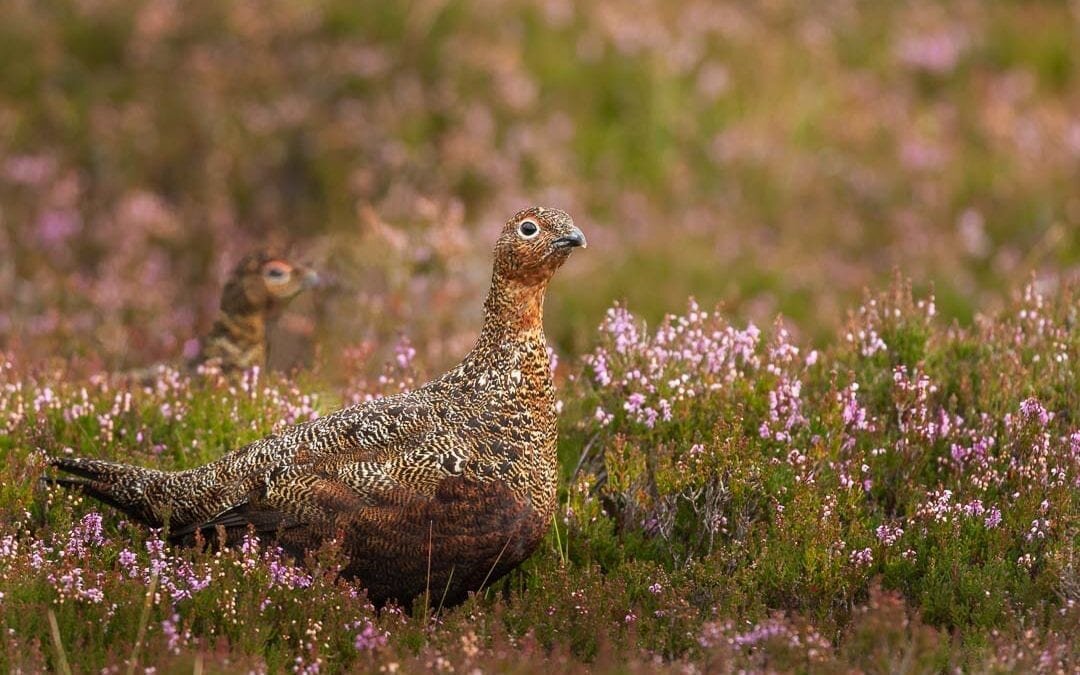
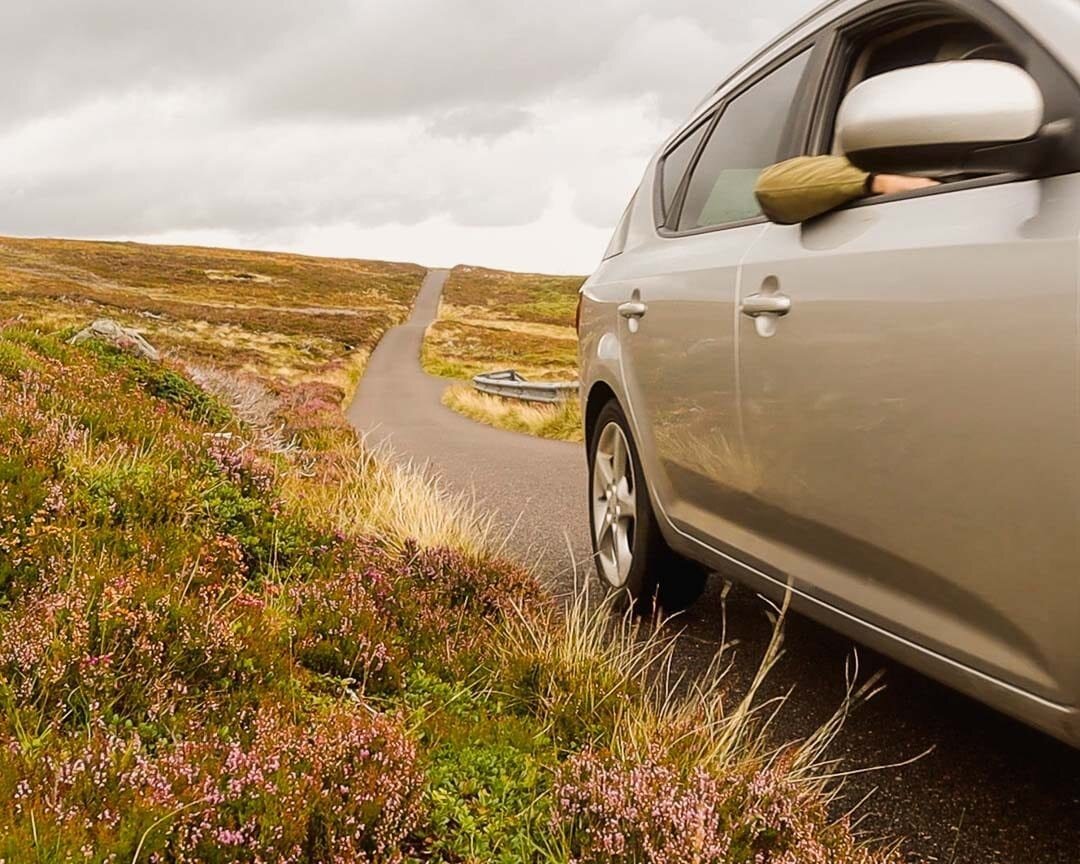
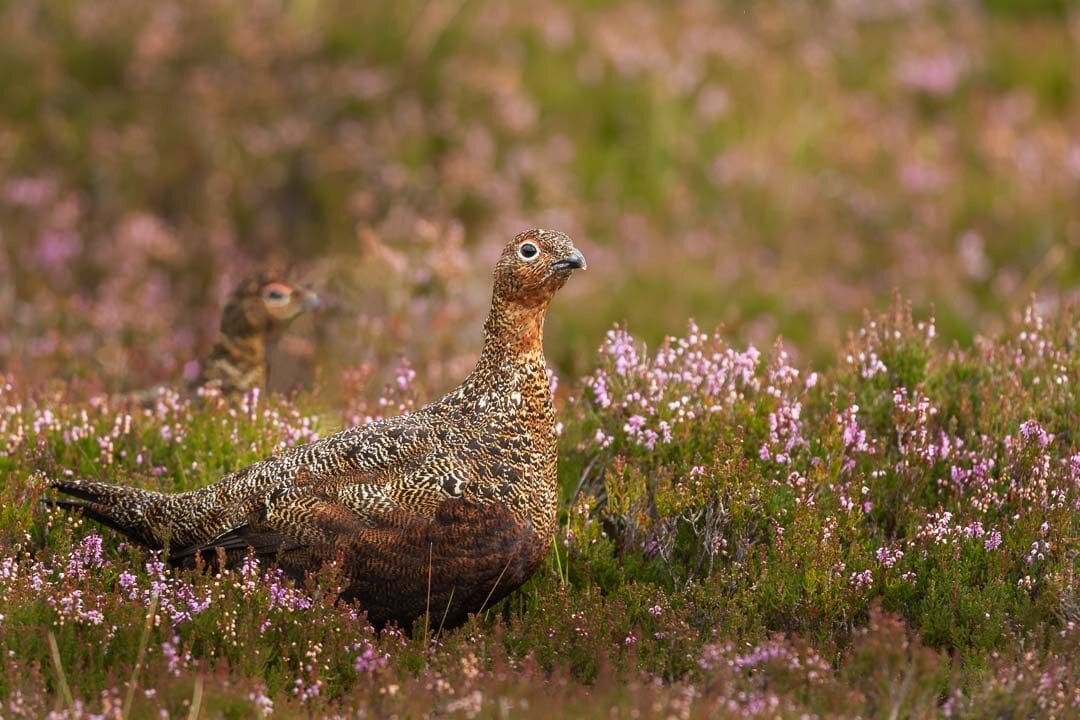
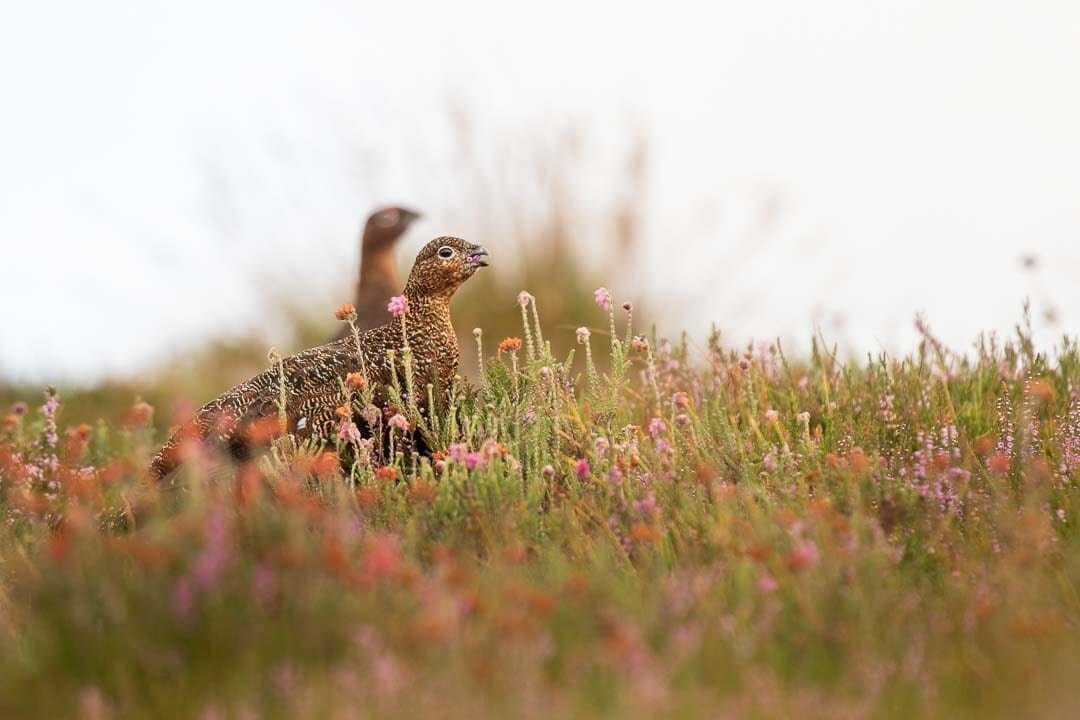
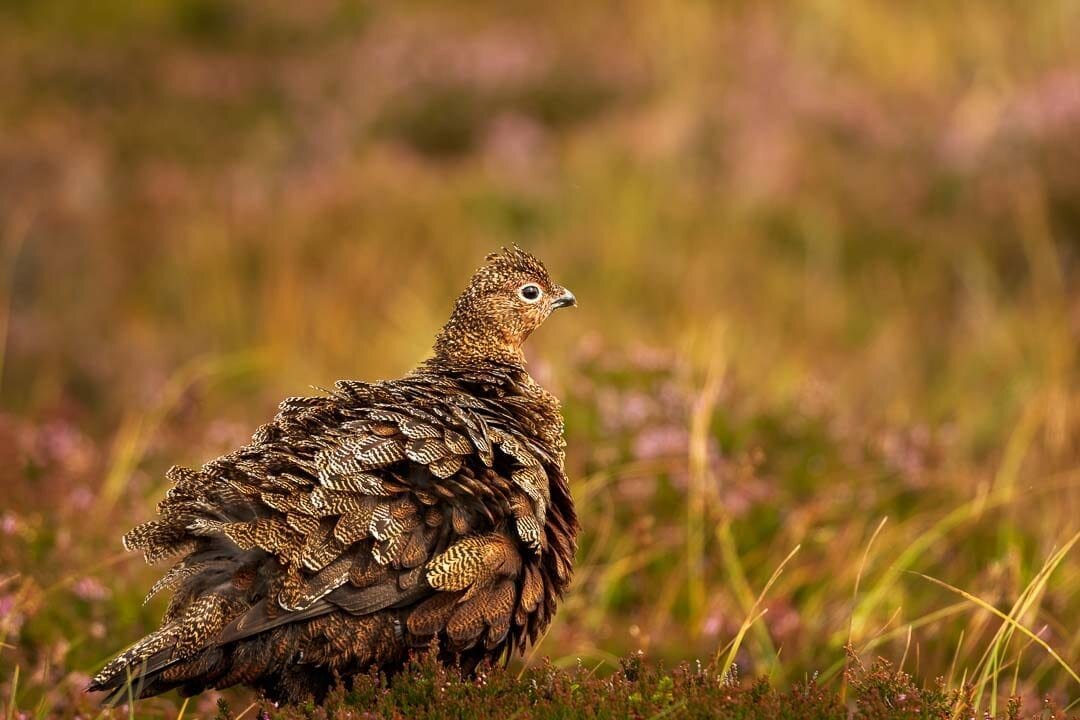

be the first to comment